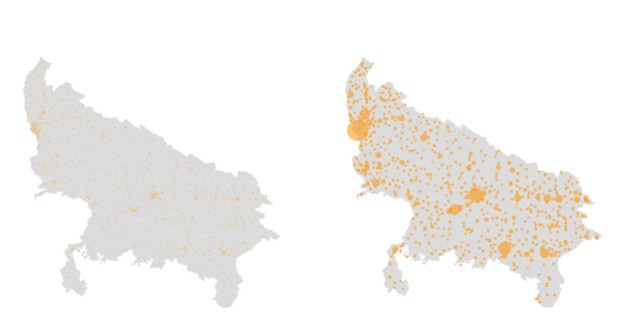New Delhi: All is set for counting of votes in 542 Lok Sabha constituencies on Thursday as opposition parties mounted vigil around the counting centres across India where the electronic voting machines (EVMs) are being kept in strong rooms.
Most exit polls have predicted a comfortable majority for the BJP-led NDA whose campaign was spearheaded by Prime Minister Narendra Modi. The opposition, however, has rejected the exit polls, calling them wrong and erroneous.
The counting exercise will begin at 8 am, capping a two-month long election process which witnessed high-octane campaigning and charges of tampering EVMs and violations of the Model Code of Conduct (MCC). Trends are expected to be available shortly thereafter.
Counting of votes will also take place for four state Assemblies — Andhra Pradesh, Odisha, Sikkim, and Arunachal Pradesh, which went to polls along with the general elections.
Twenty-two opposition parties had on Tuesday knocked the Election Commission’s doors to press their demand for counting of five VVPAT samples first and also taking up 100 percent counting of VVPATs in case of any mismatch with an EVM.
The EC on Wednesday rejected the opposition demand.
The opposition parties have also alleged that EVMs were replaced from the strongrooms in some constituencies in Bihar and Uttar Pradesh after what they said was suspicious movement of the voting machines on Tuesday.
However, the EC had rubbished the reports, terming them as “absolutely false”. A 24-hour EVM Control Room has been made functional at Nirvachan Sadan in New Delhi to monitor complaints relating to EVMs.
The poll panel is also keeping a close watch on the counting centers across the country. Ahead of the counting process, a three-tier security system was put in place at the EVM strong rooms and the counting process will be carried out under CCTV surveillance.
As per the EC’s directives, five polling stations per Assembly segment will be selected on a random basis for verification of VVPAT slips. The verification process of VVPATs may take four to five hours.
The seven-phase Lok Sabha elections commenced on April 11 and the last phase of voting was held on May 19. The dates were announced by the EC on March 10, following which the MCC had come into effect.
Over 8,000 candidates are in the fray for 542 Lok Sabha seats across the country.
Among the keenly watched constituencies will be Varanasi from where Prime Minister Modi is seeking re-election and Amethi represented by Congress president Rahul Gandhi since 2004. Rahul is also contesting from Wayanad in Kerala.
His mother Sonia Gandhi is also seeking another term from Raebareli.
In the two-month long election process, leaders cutting across party lines were engaged in a high-decibel campaign, making promises and launching attacks on their opponents in a bid to woo the voters.
At a dinner hosted by BJP president Amit Shah for NDA allies on Tuesday, the Prime Minister had said that the NDA is an alliance, which would represent the country’s expectations and ambitions.
“We have become an organic entity. The NDA has played an important role in fulfilling the regional aspirations,” Modi said.
Rahul, on the other hand, is banking on his party’s proposed NYAY scheme, which promises to provide Rs 72,000 to 20 percent of the country’s poorest.
He and other Congress leaders have repeatedly attacked BJP for alleged irregularities in Rafale fighter jet deal, demonetization and GST, besides employment and agrarian issues.
[source_without_link]ANI[/source_without_link]

